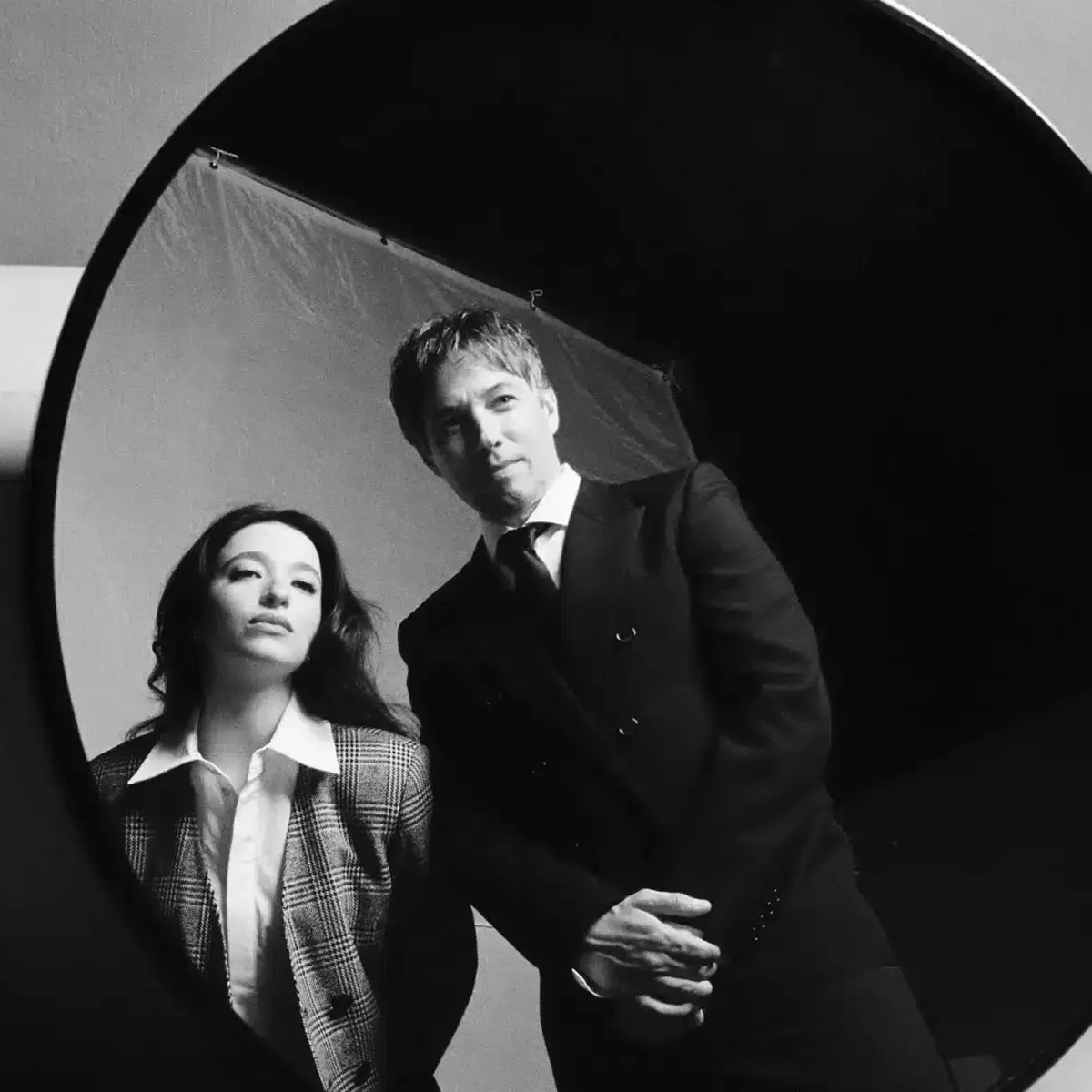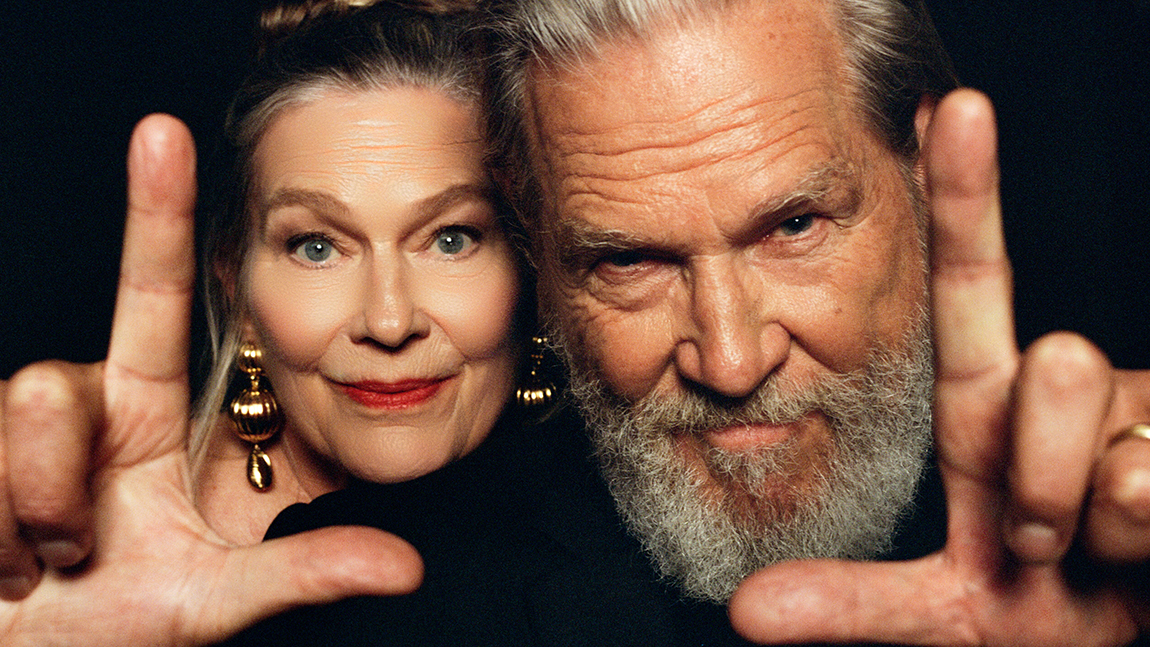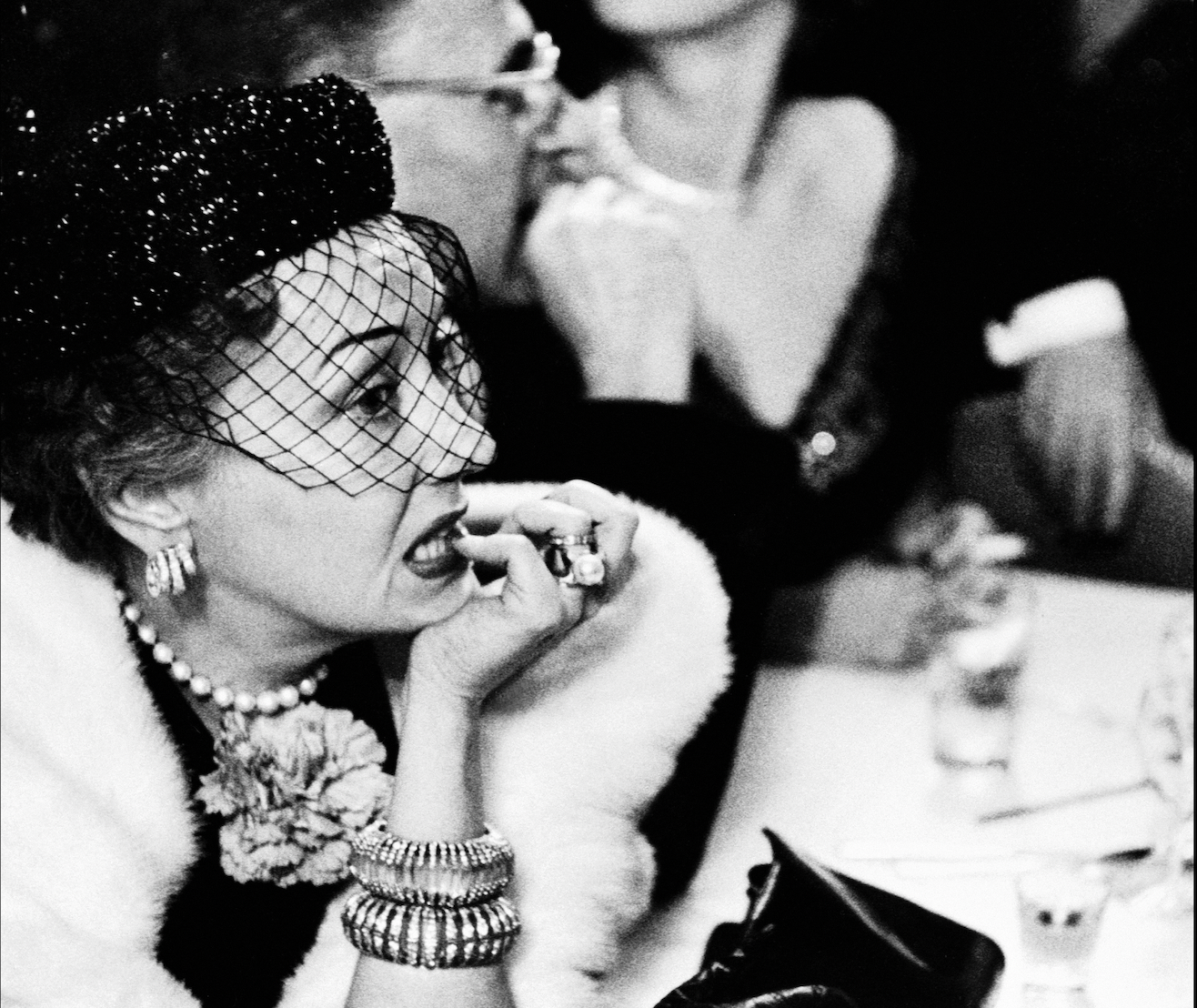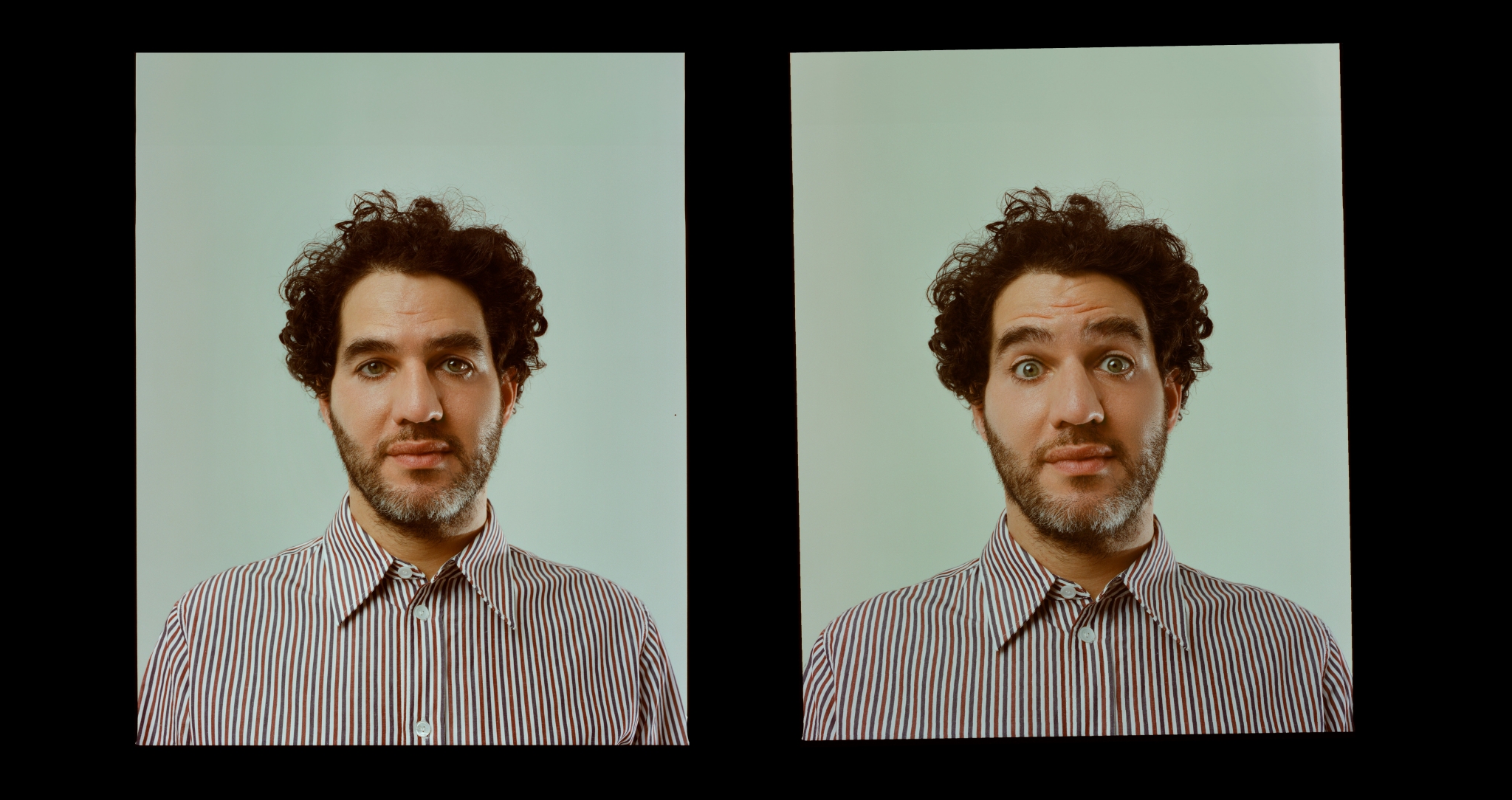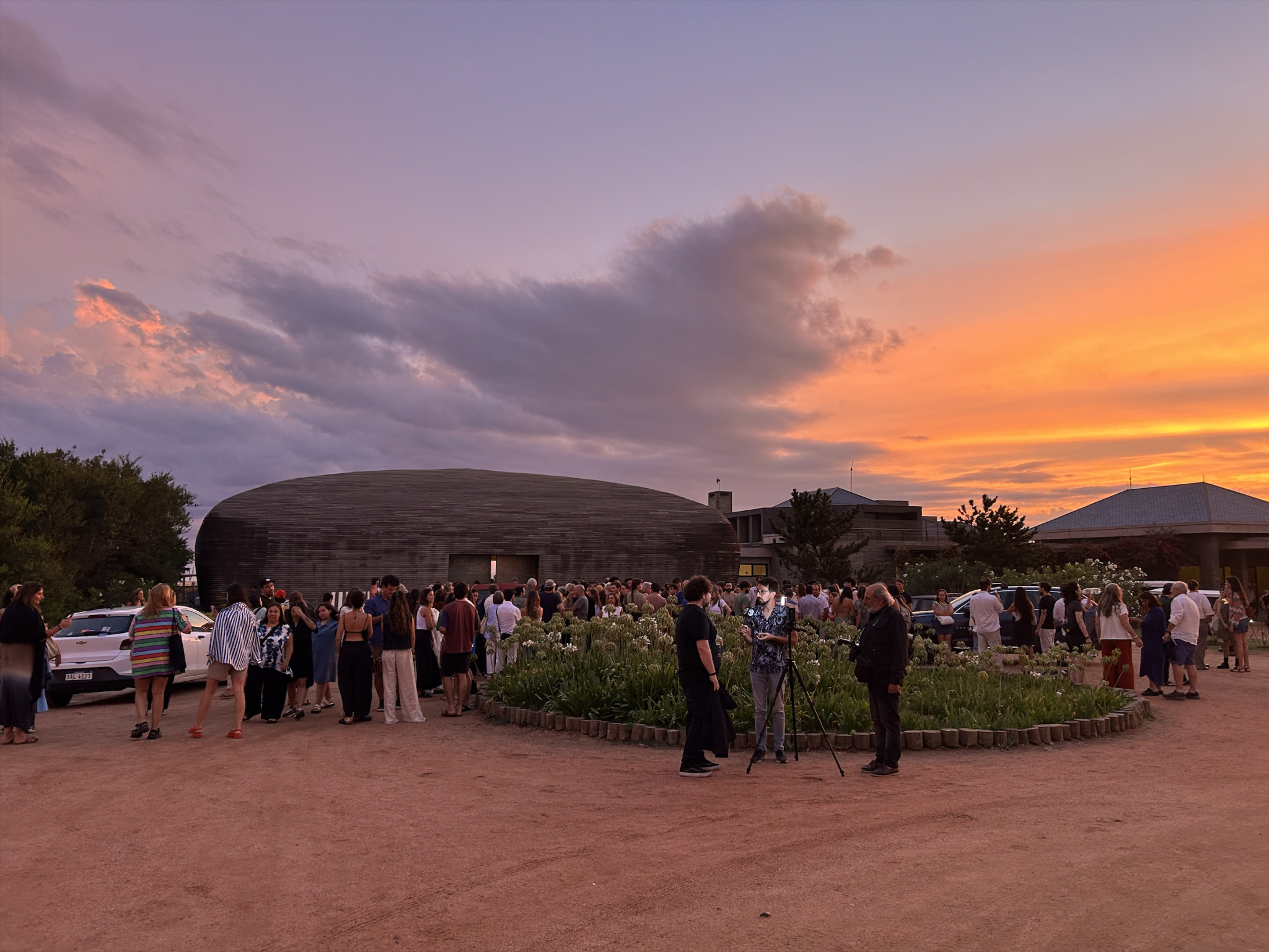
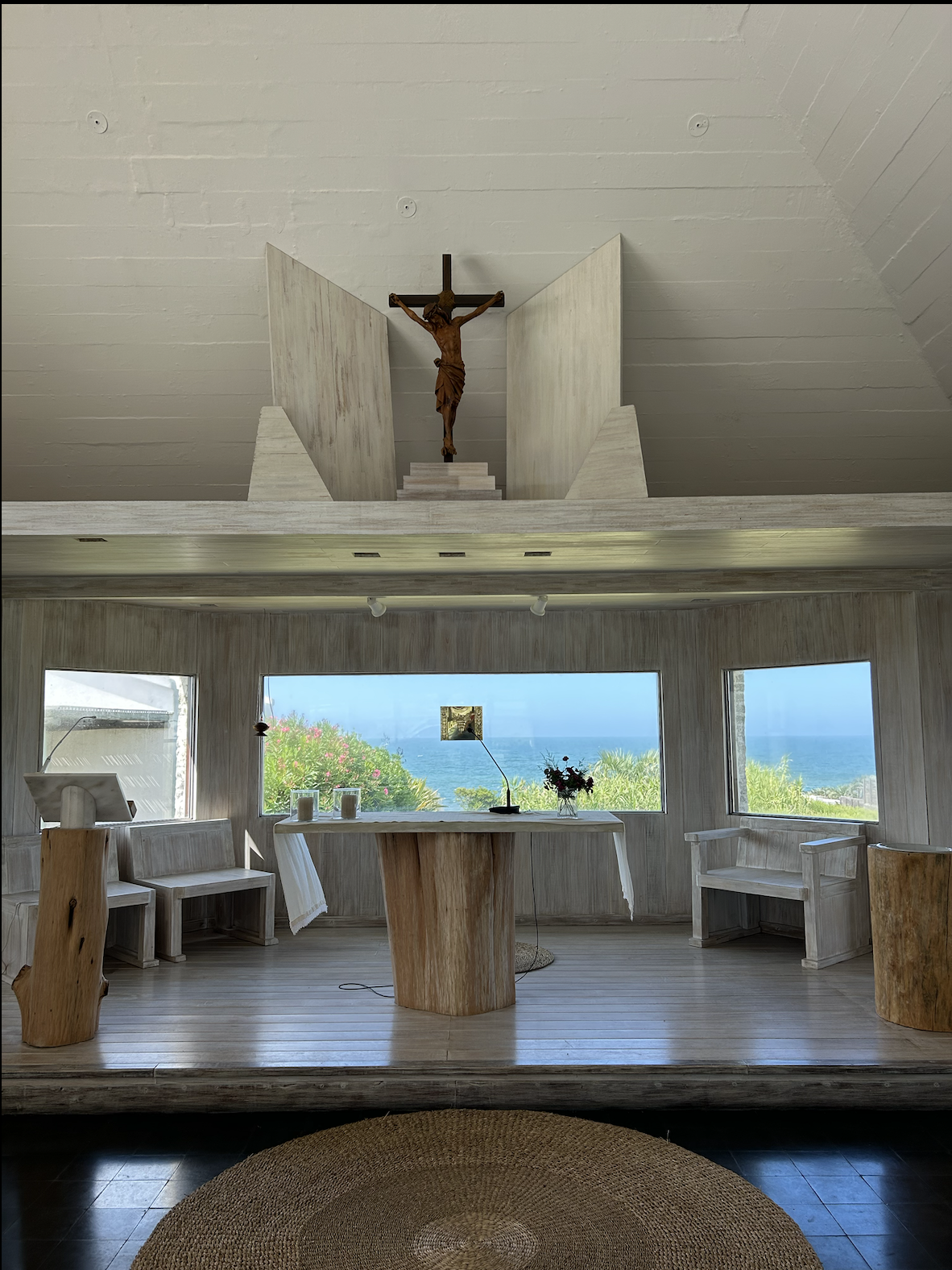
A Rabbit’s Foot’s Chris Cotonou recounts his experience visiting Uruguay for the 2025 edition of the José Ignacio International Film Festival.
“It’s growing, but we’re still keen on keeping it as intimate as possible,” Lu Moreira tells me.
Moreira is a film critic from Montevideo and an award-winning producer. We’ve been speaking in preparation for my trip to cover the Jose Ignacio International Film Festival, and Moreira’s schedule is mostly filled with one of the event’s great aspects: the JIIFF Lab and Generación J.
Landing in Montevideo, I’m driven to Jose Ignacio, a town on Uruguay’s southwestern coast, for the local film festival, which is celebrating 15 years. It has been called the Hamptons of South America. There is art and money everywhere; the residents (including wealthy expats from Argentina or the States) look carefree and healthy, spending their days in the sea or at outdoor restaurants. It is near the lively resort town Punta del Este and chef Francis Mallmann’s idyllic Macondo: Pueblo Garzon.
If Jose Ignacio isn’t the biggest film festival, it is certainly, in my opinion, the most beautiful I have been to. Apart from the programme—with a feature and short film category—the Industry Programme is the most interesting aspect to follow. I met a group of Uruguayan filmmakers over asado (the local grill) who are here as part of Generation J; a scheme devised to support emerging directors. Although all but a couple are from the capital, the intention is to build a network that will collaborate in the future, boosting the production of Uruguayan cinema. There is also the Pfeffer Fund, as part of The Lab series of workshops, which donates $50,000 to a series of established filmmakers pitching their fiction ideas from all around Latin America. “This festival is for people to meet each other,” says Pablo Mazzolla, director of Working JIIFF and a programmer, over drinks one evening.
This is unlike most festivals. There is a fixed schedule and few screenings; perhaps just one at the end of the day. I lazily float between a master class and small cafes where my feet are buried in sand, and then group meetings in beautifully-designed restaurants or museums. “It’s intimate and beautiful here,” Moreira agrees, “I’m not sure we want it to become a festival that is overrun. The close nature of the events is what makes it so special.”
This is a town full of tasteful architectural highlights that fit the boho ocean atmosphere; from the Rizoma bookstore to the James Turrell Skyspace, and the famous lighthouse, or faro, of Jose Ignacio. As I drove in, it reminded me of Santa Barbara in California.
The first screening was in the famous domed Vik Pavilion, beside the ocean. It was a pulpy Uruguayan comedy-horror (a little Edgar Wright / Tarantino) called El tema del verano, by Pablo Stoll Ward, which was filmed near where we were sitting. I met the Chilean producer, Florencia Larrea, who shared my awe at the local beauty surrounding the Pavilion. “What a special place to enjoy cinema,” she said.
“This is unlike most festivals. There is a fixed schedule and few screenings; perhaps just one at the end of the day. I lazily float between a master class and small cafes where my feet are buried in sand, and then group meetings in beautifully-designed restaurants or museums.”

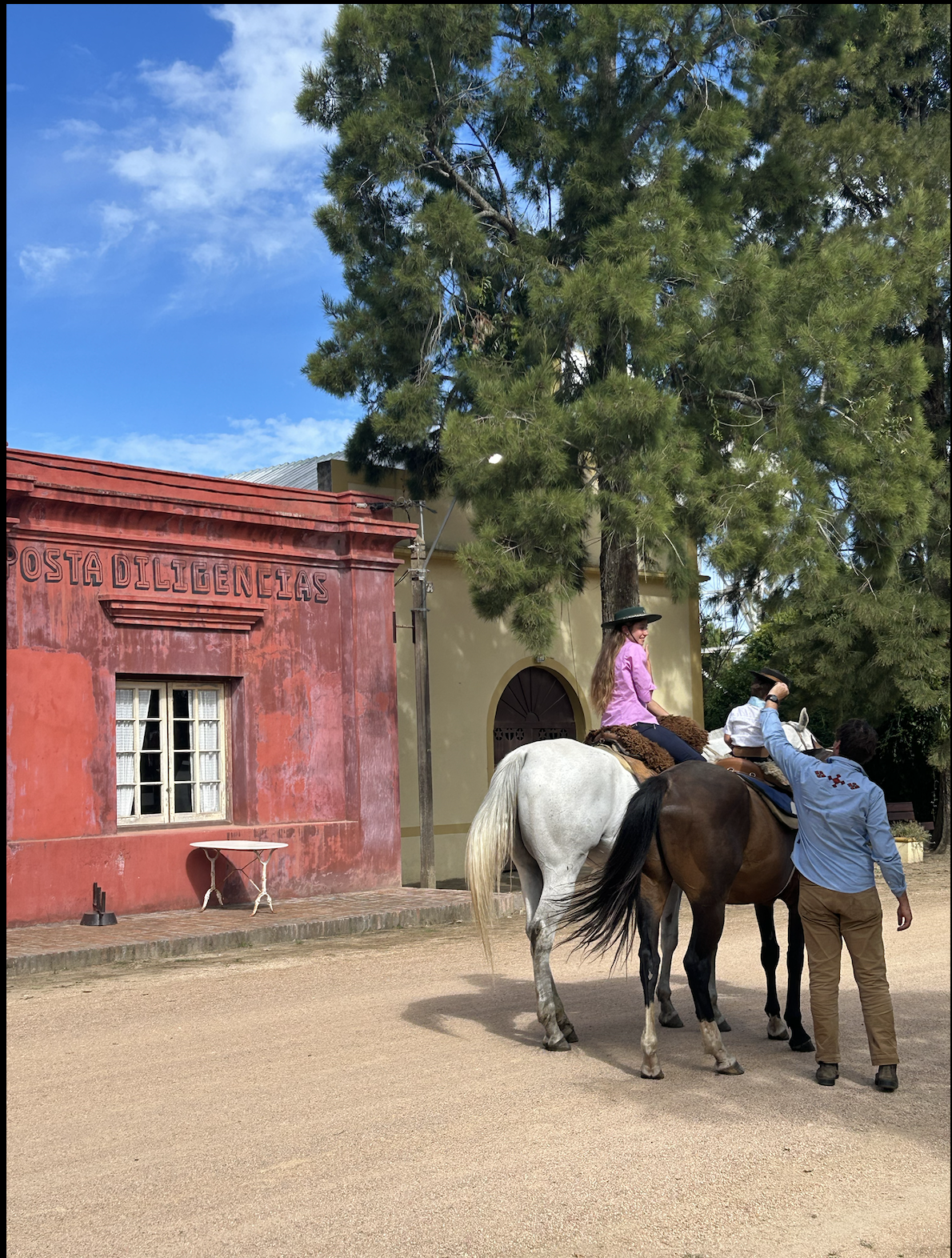
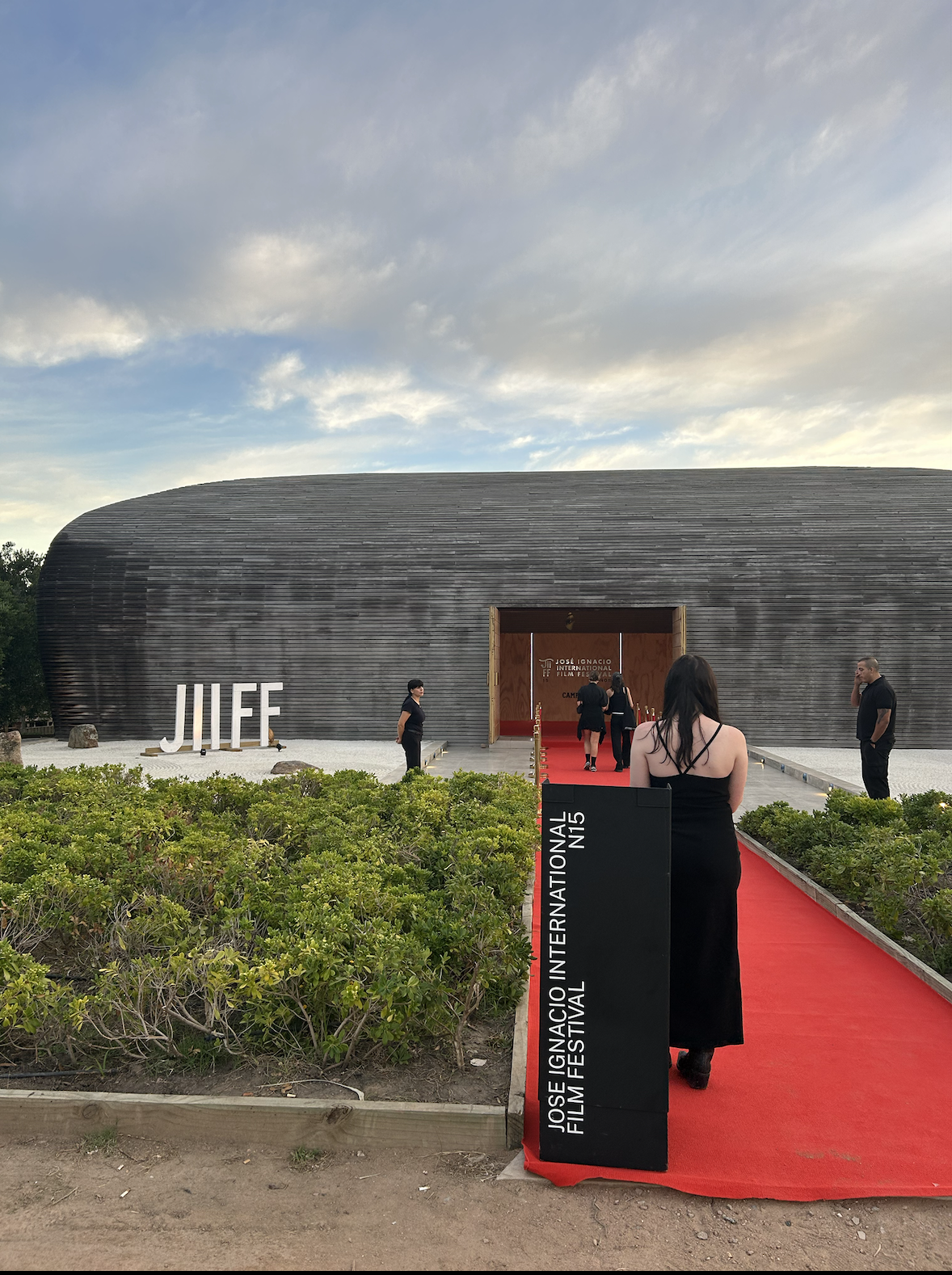
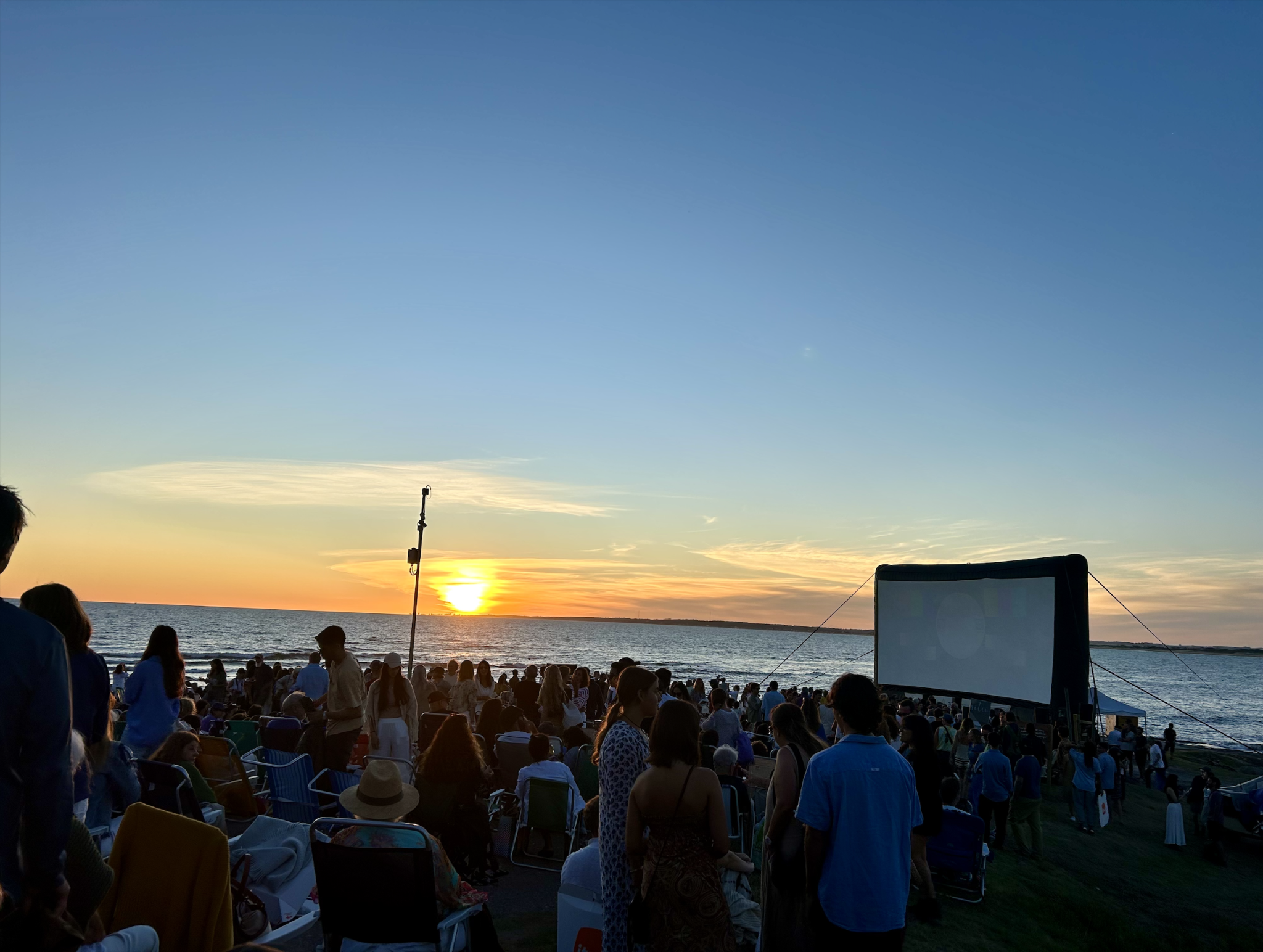
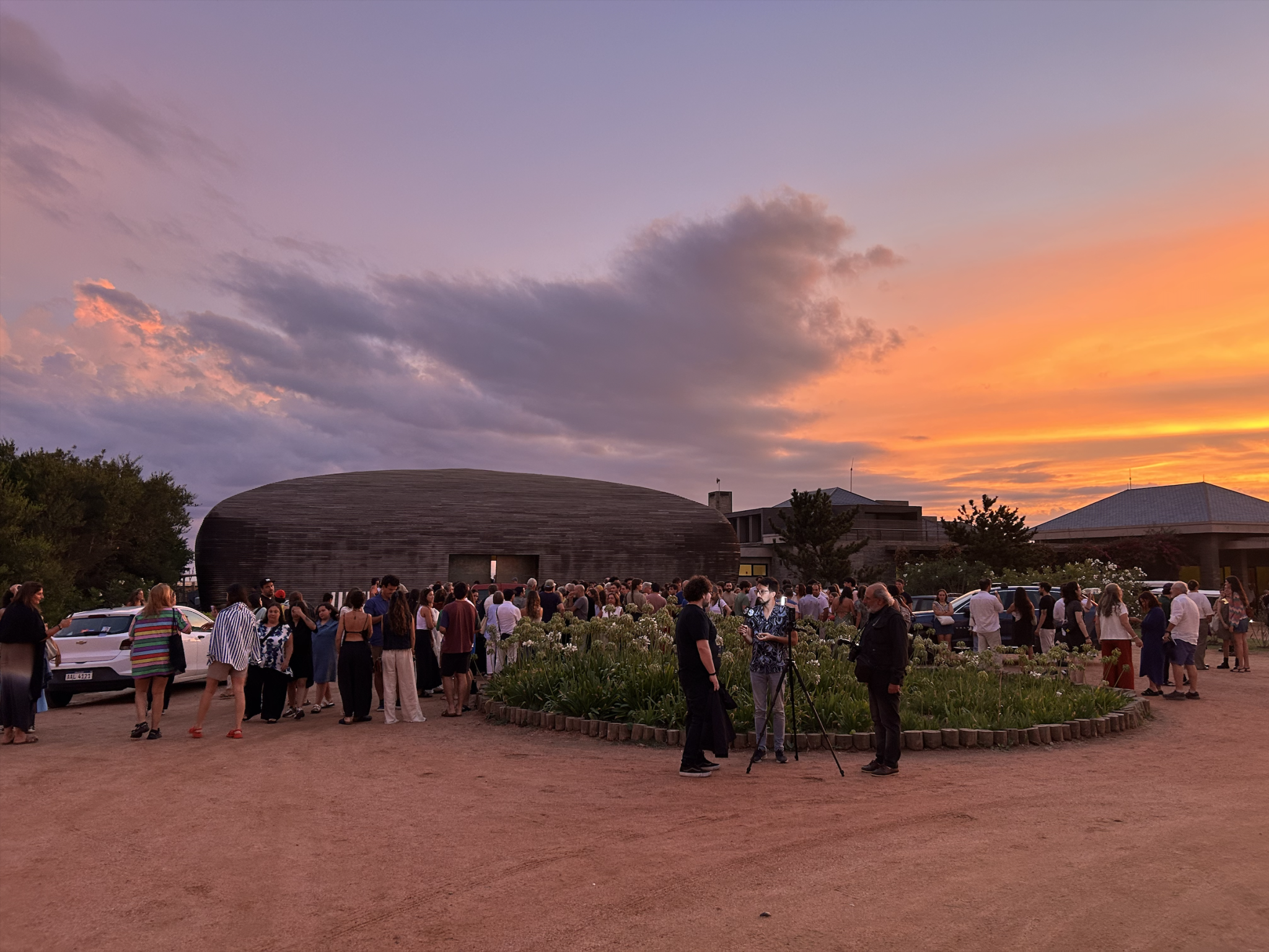

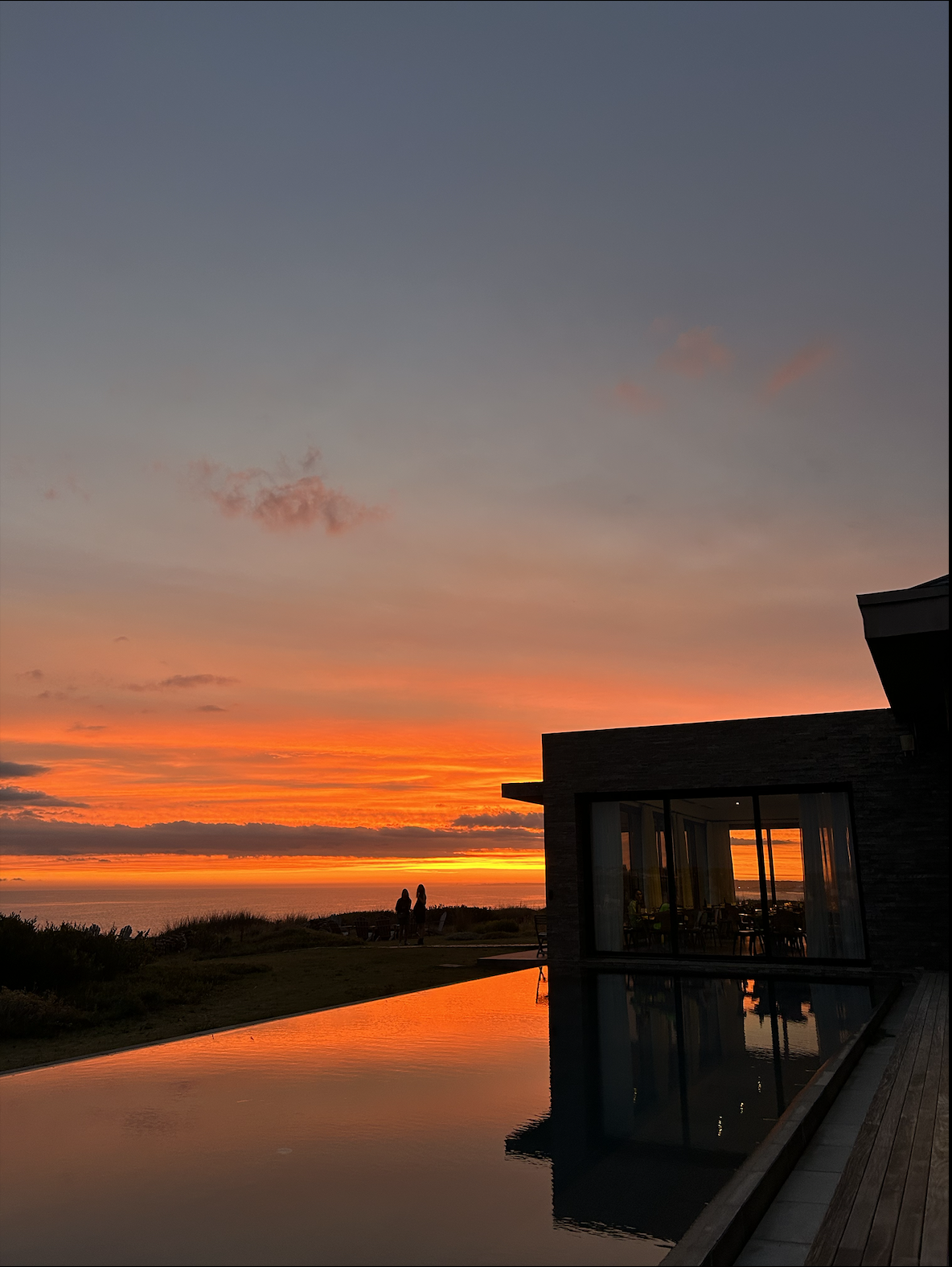
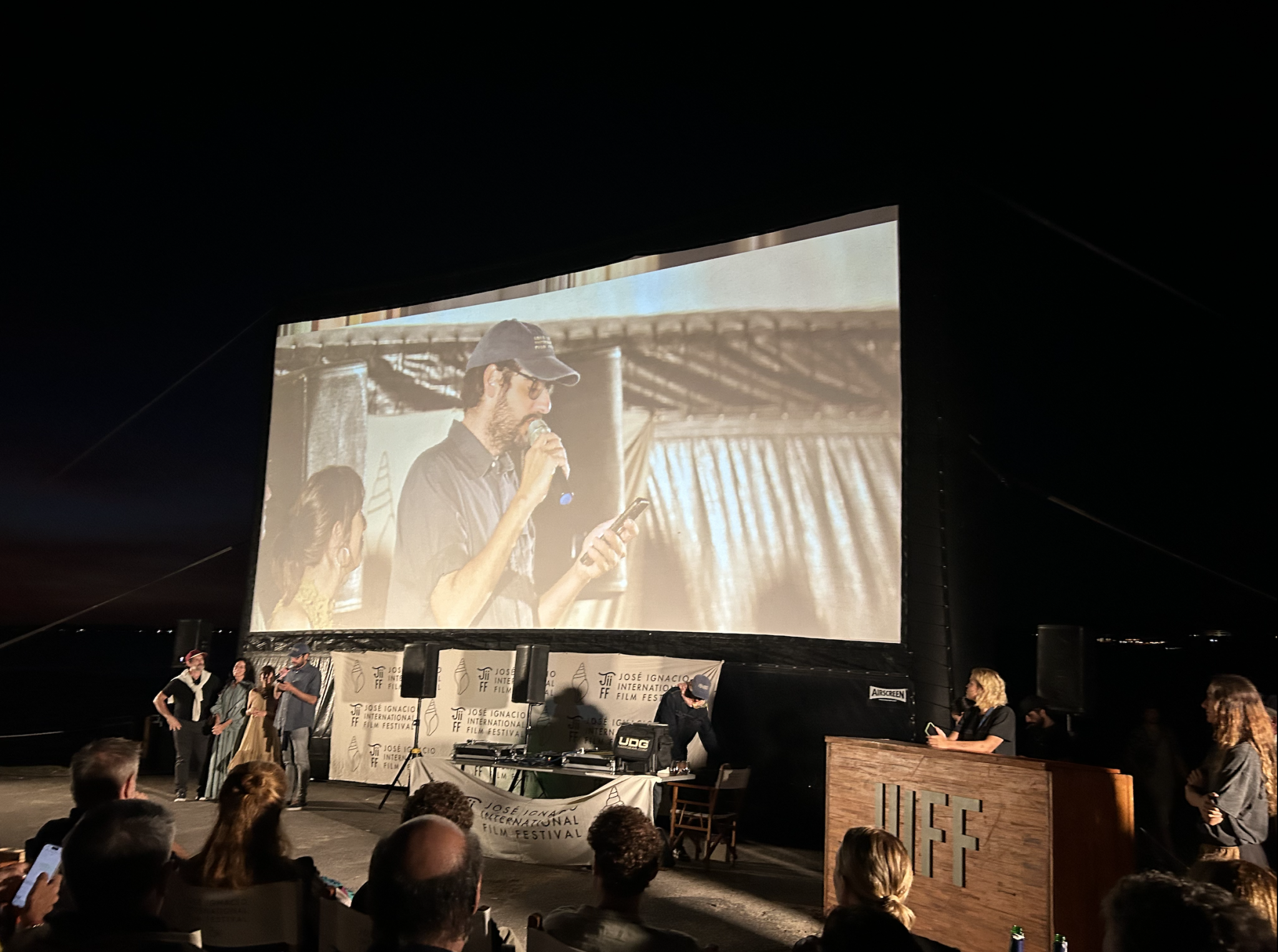
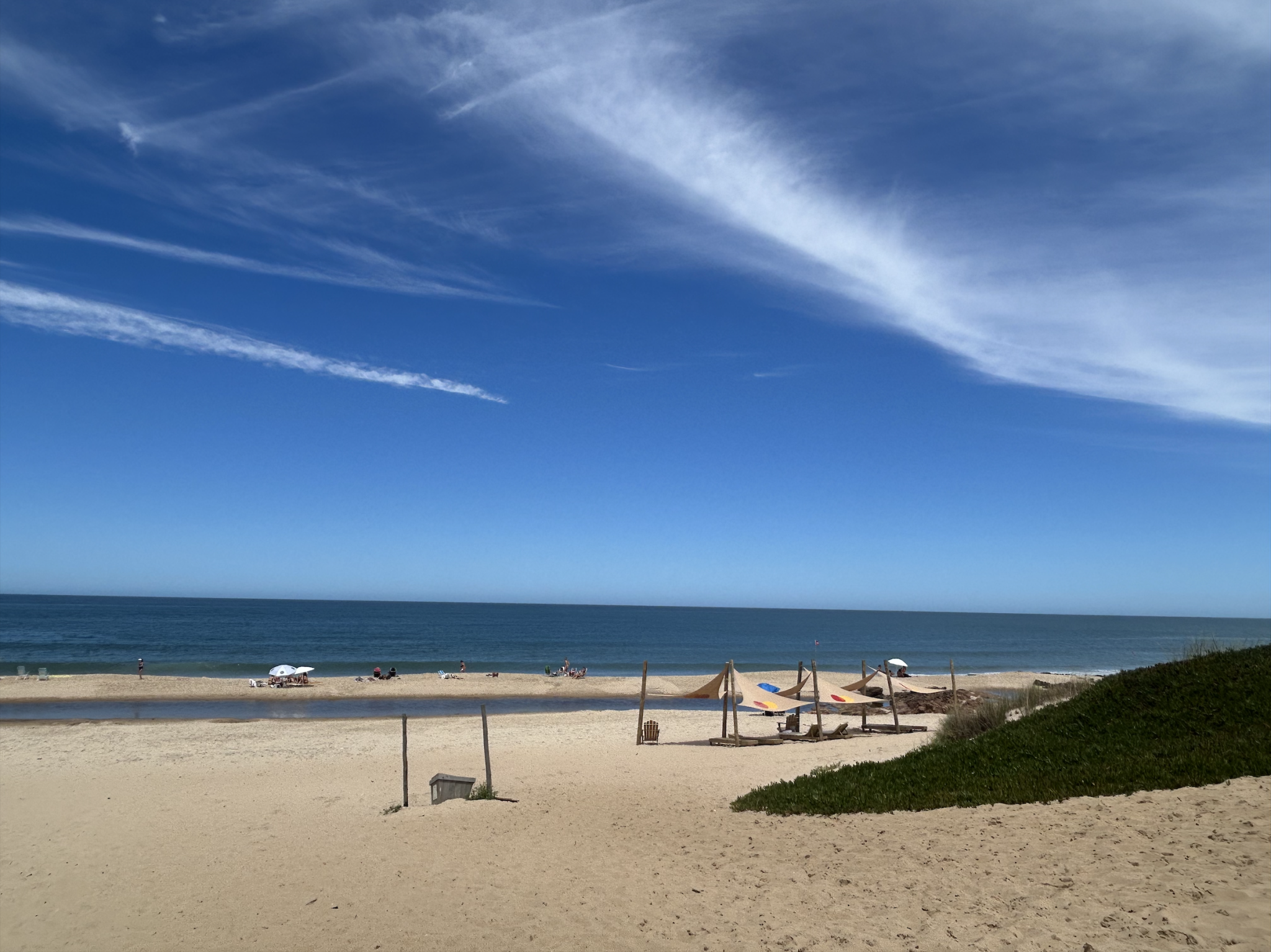
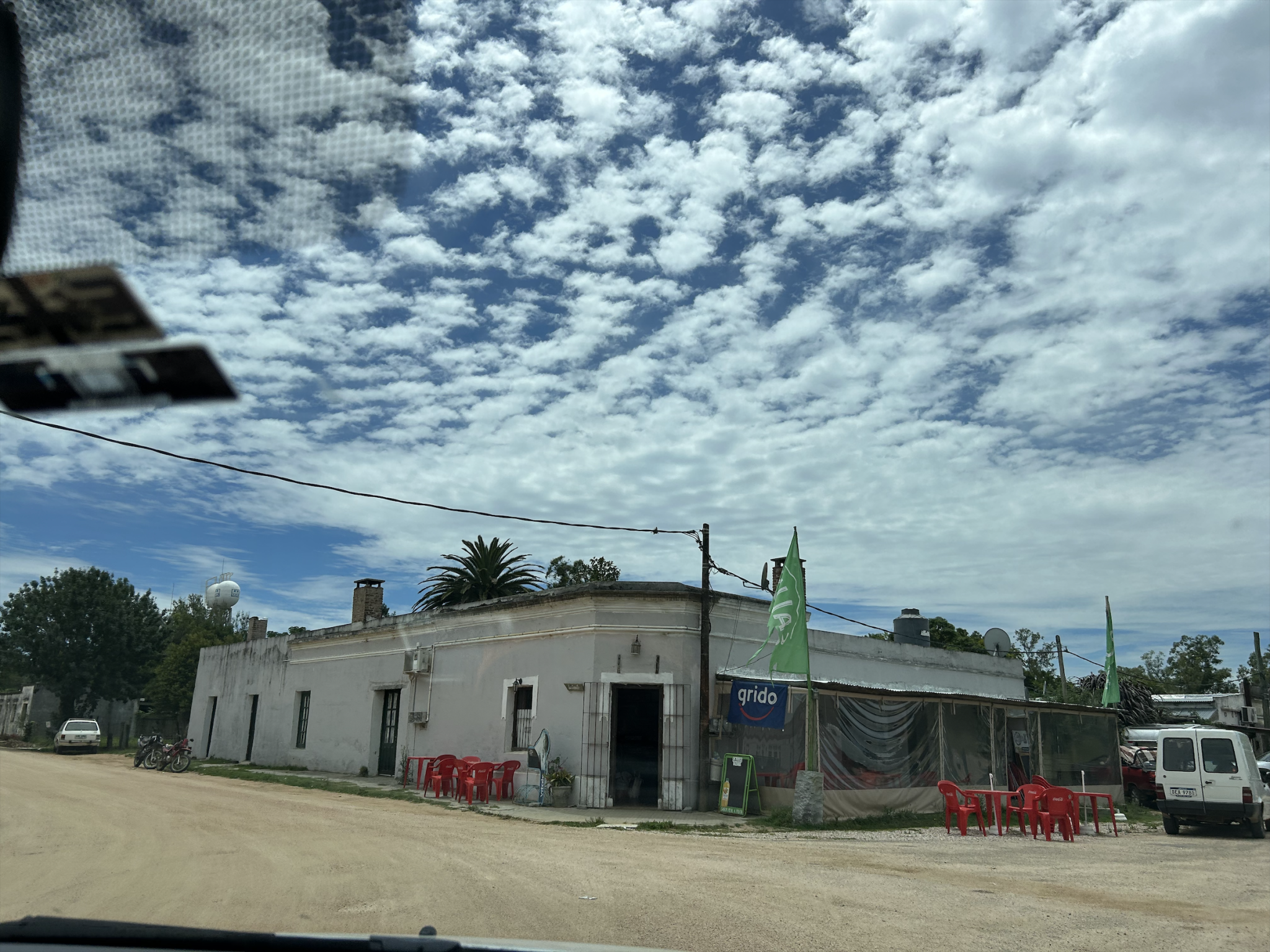

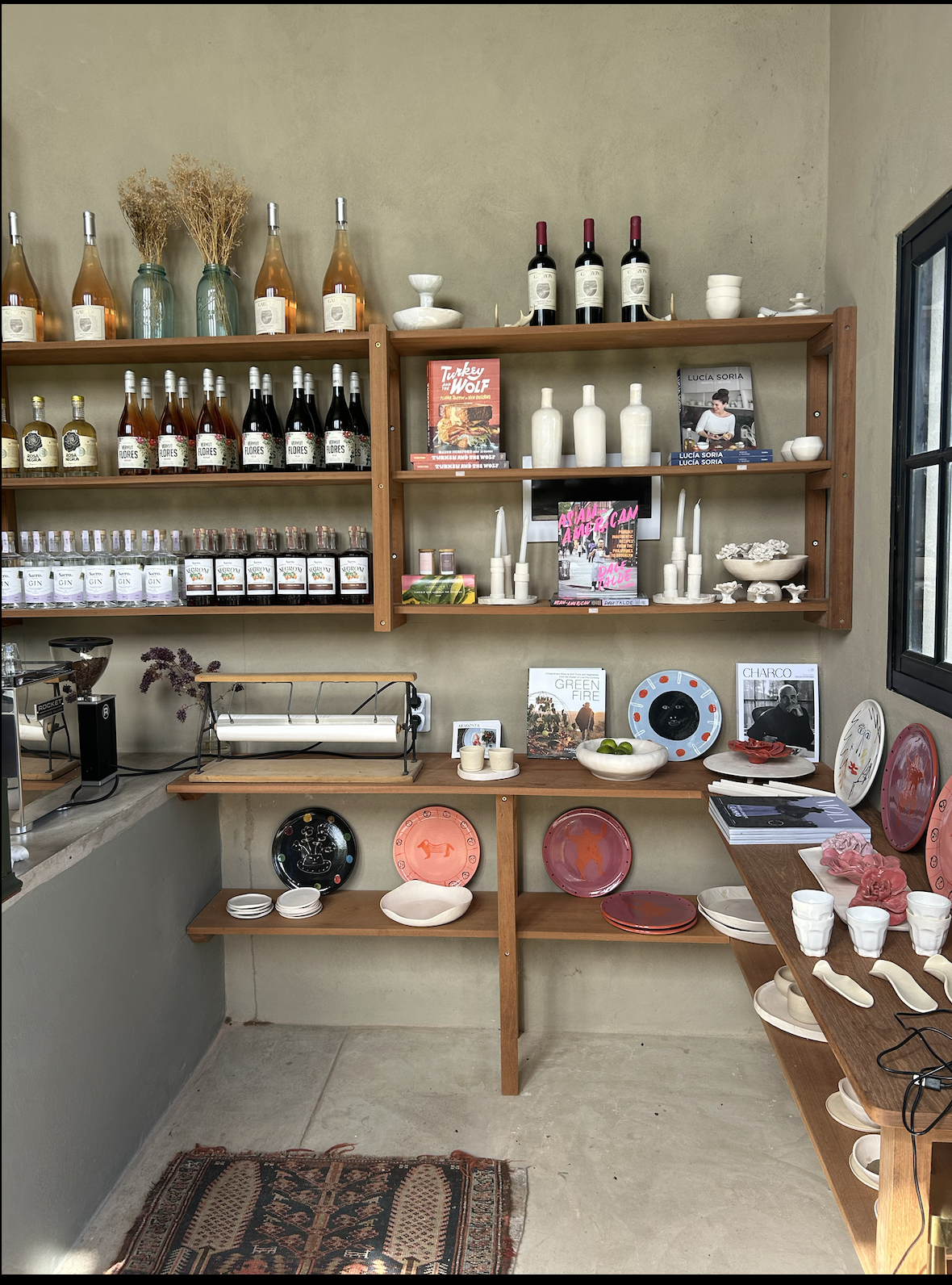
The following day, I was able to join Generation J (at this point, my group of new pals) to see the producer Victoria Alonso give a workshop. In the garden of a small restaurant, Alonso shared aspects of her life, her time at Disney Marvel, and took audience questions—notably from members of Generation J and The Lab contenders. This is a part of the festival I appreciate most: it’s a place for Latin American filmmakers across multiple levels to learn and connect. If Generation J hadn’t known each other previously (although, they’re nearly all from Montevideo), they became friends and potential collaborators, after the experience. The same goes for The Lab; a casserole of producers, writers, and directors from Mexico, Argentina, Bolivia, Brazil, Chile and Uruguay, all intermingling, creating, and helping each other shape their movie ideas. The Pfeffer Fund grants $50,000 to the filmmaker and producer with the best idea. And it’s thrilling to see how, over the course of a few days, these ideas are shaped, developed, doubted, and finally put forward.
(Oh, I was also interviewed by Uruguay XXI, which you can read here. The journalist articulates my thoughts very well.)
On The penultimate day, the festival was showing Jacques Audiard’s Emilia Pérez on the lip of the coast, near where fishermen park their small boats. Days before, I’d heard of a “phenomenon” for the final screening, where locals carry deck chairs from across town and place them in front of the inflatable screen. As the sun set and hundreds settled in behind us, Jacques Audiard and Karla Sofia Gascon appeared and presented the film to loud applause.
All good and well. And then… time to celebrate. As it’s the 15th anniversary, the final day was celebrated with a large party inside the Vik Pavilion and award announcements. The winner of the Fondo Pfeffer del Sur fund went to Chile’s Giancarlo Nasi and Maria Paz Gonzalez for Morir De Pie (we’ll be keeping an eye out). For my beloved Generation J, the winning participants were Felix Perez Corduri and Azul Vanni. With so much talent in their next generation, I believe this small Latin American country is punching above its weight (they’re used to it in football). For Diego Acosta, 32: “I’m here to see how my idea can be shaped and improved.” To Malena Álvarez, 24: “I wasn’t sure what aspect of cinema I wanted to be involved in. This helped me a lot.” JIIFF is actively molding their potential.
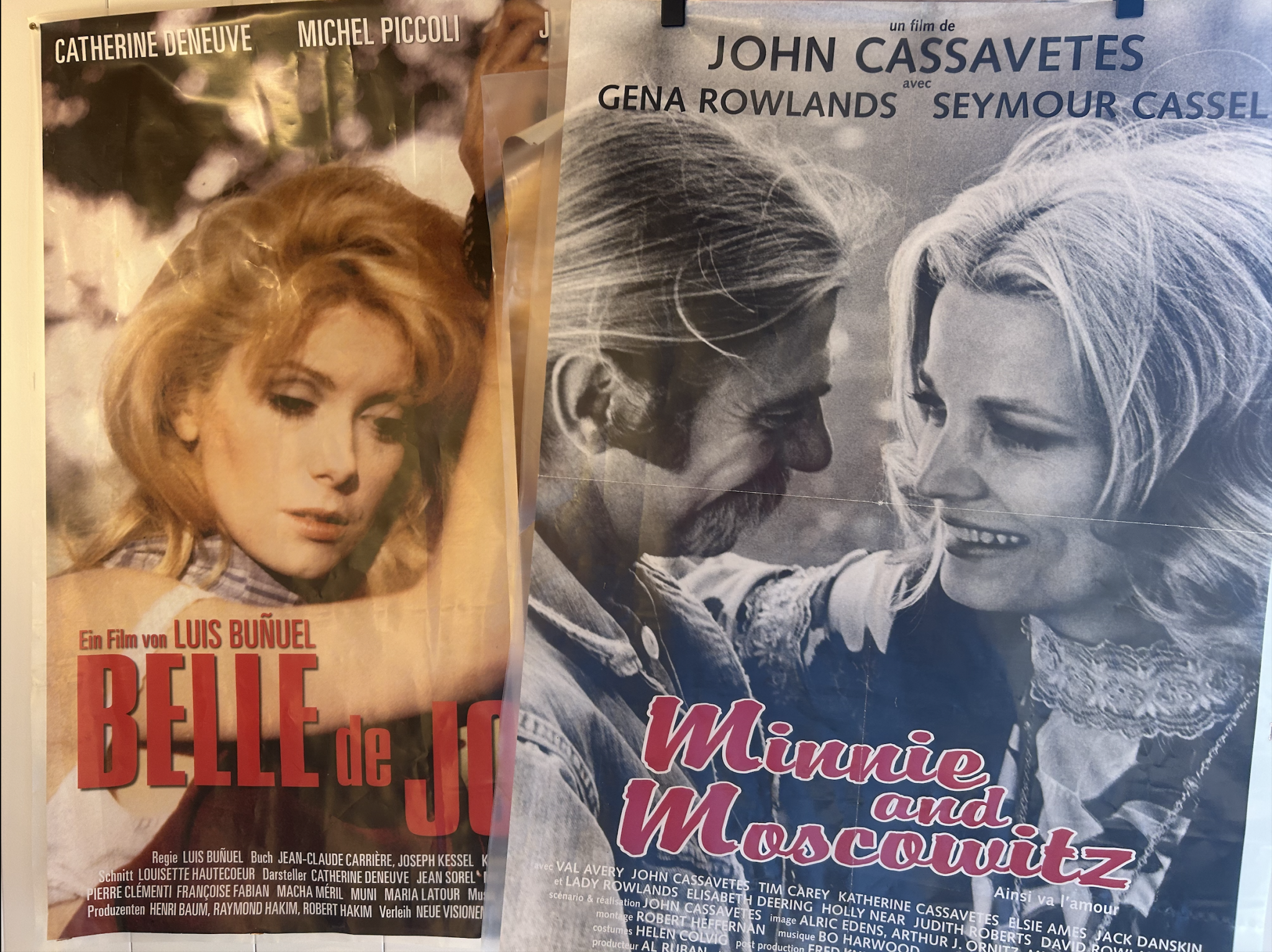
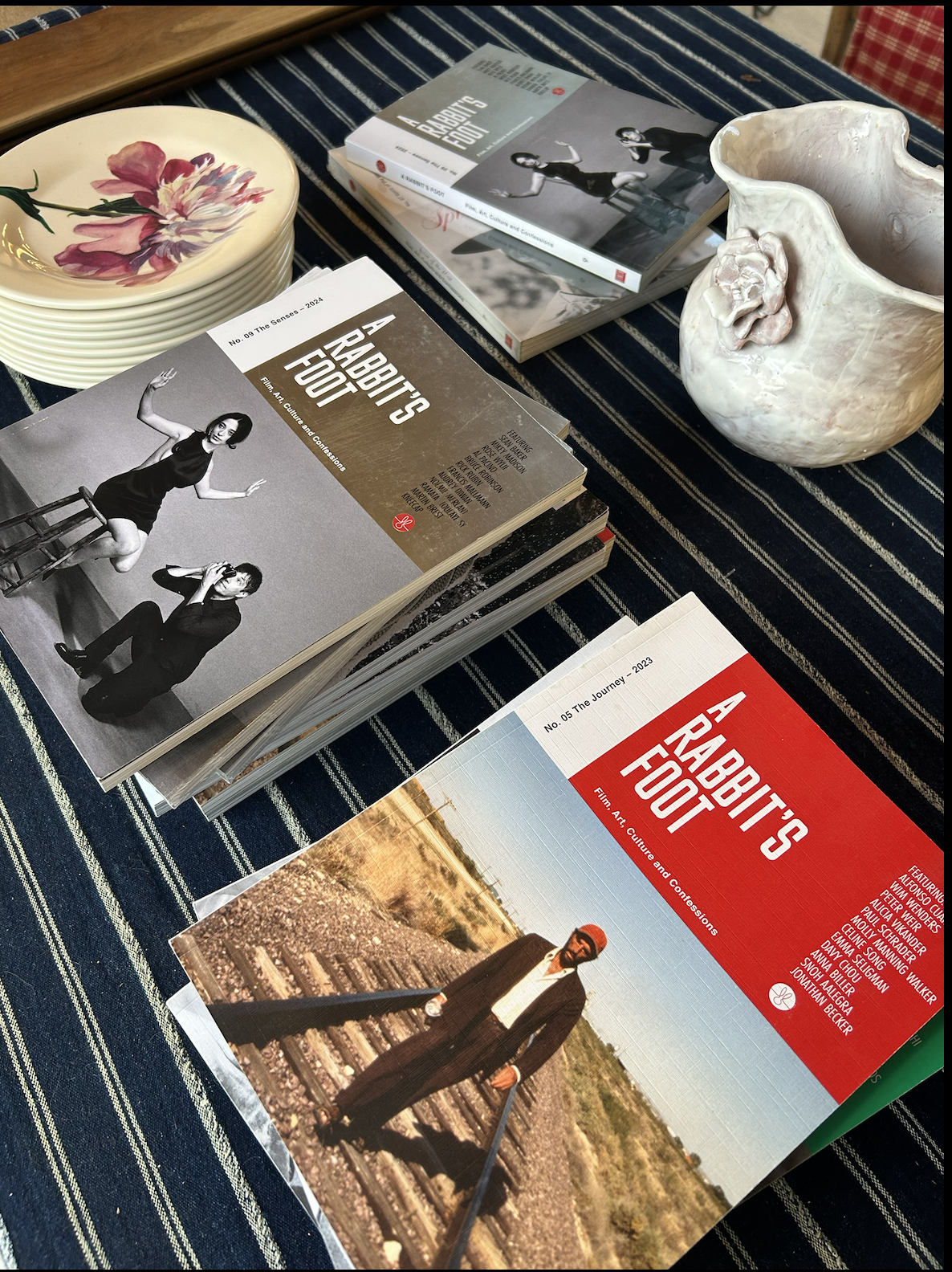
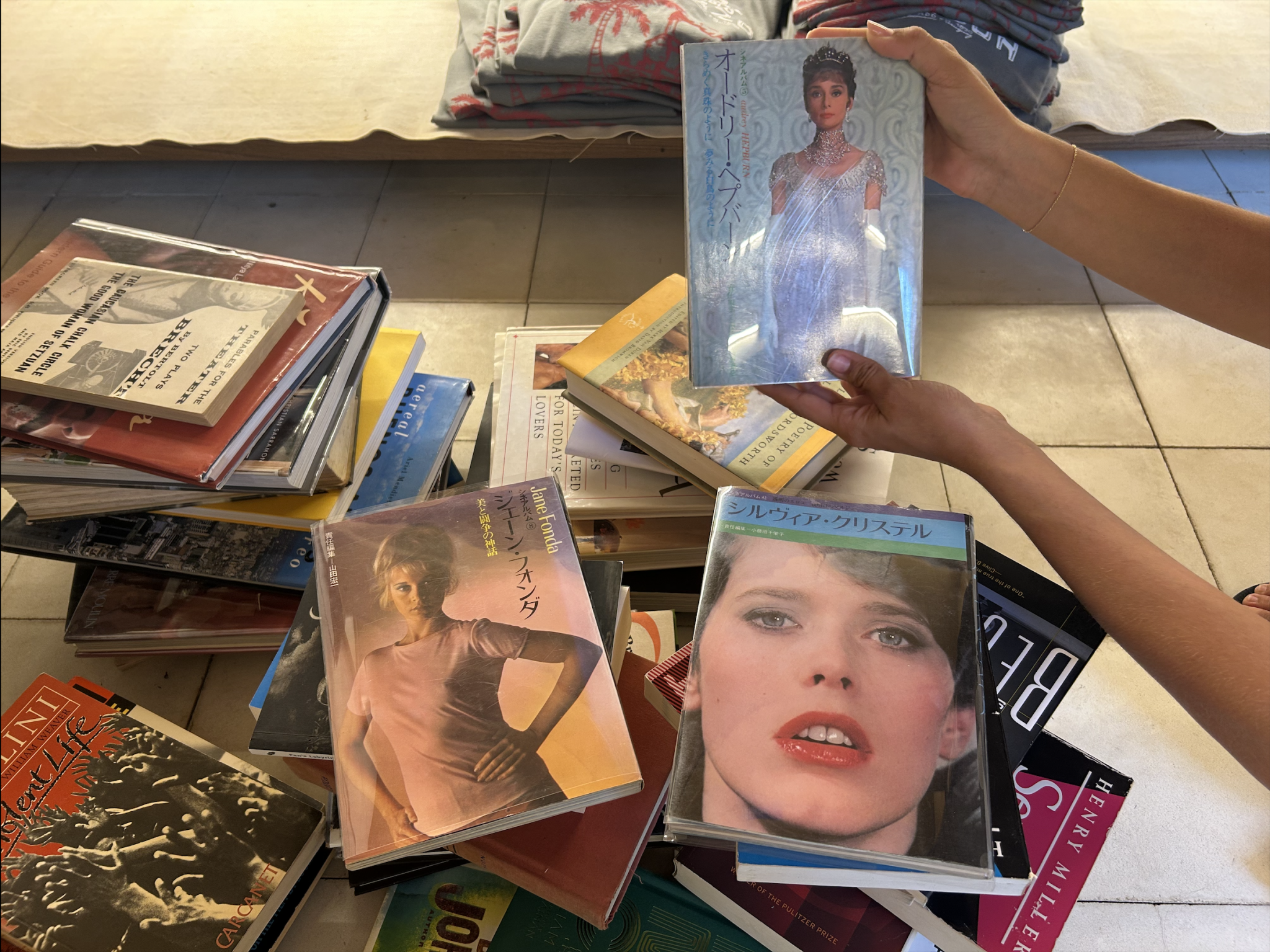
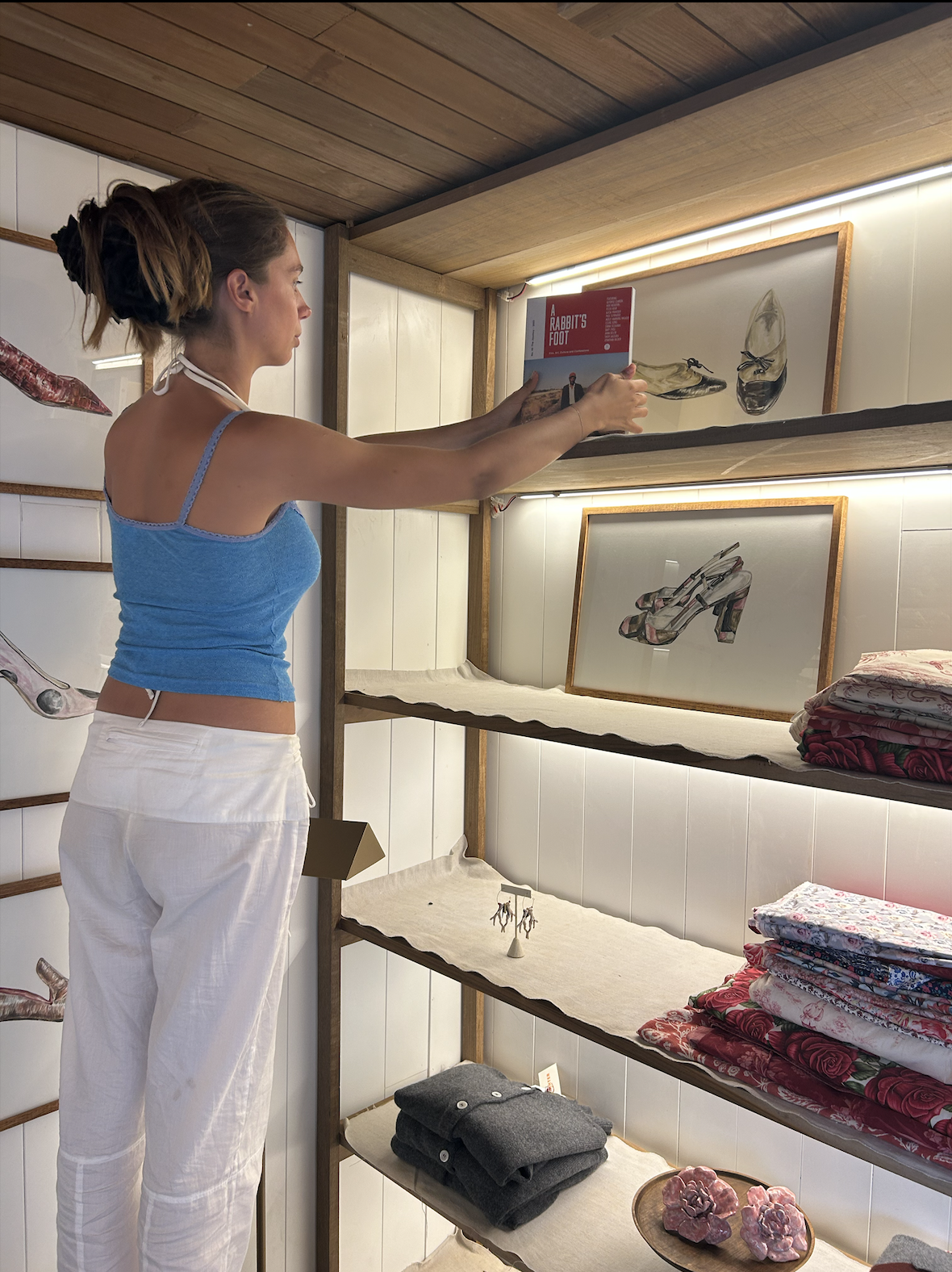
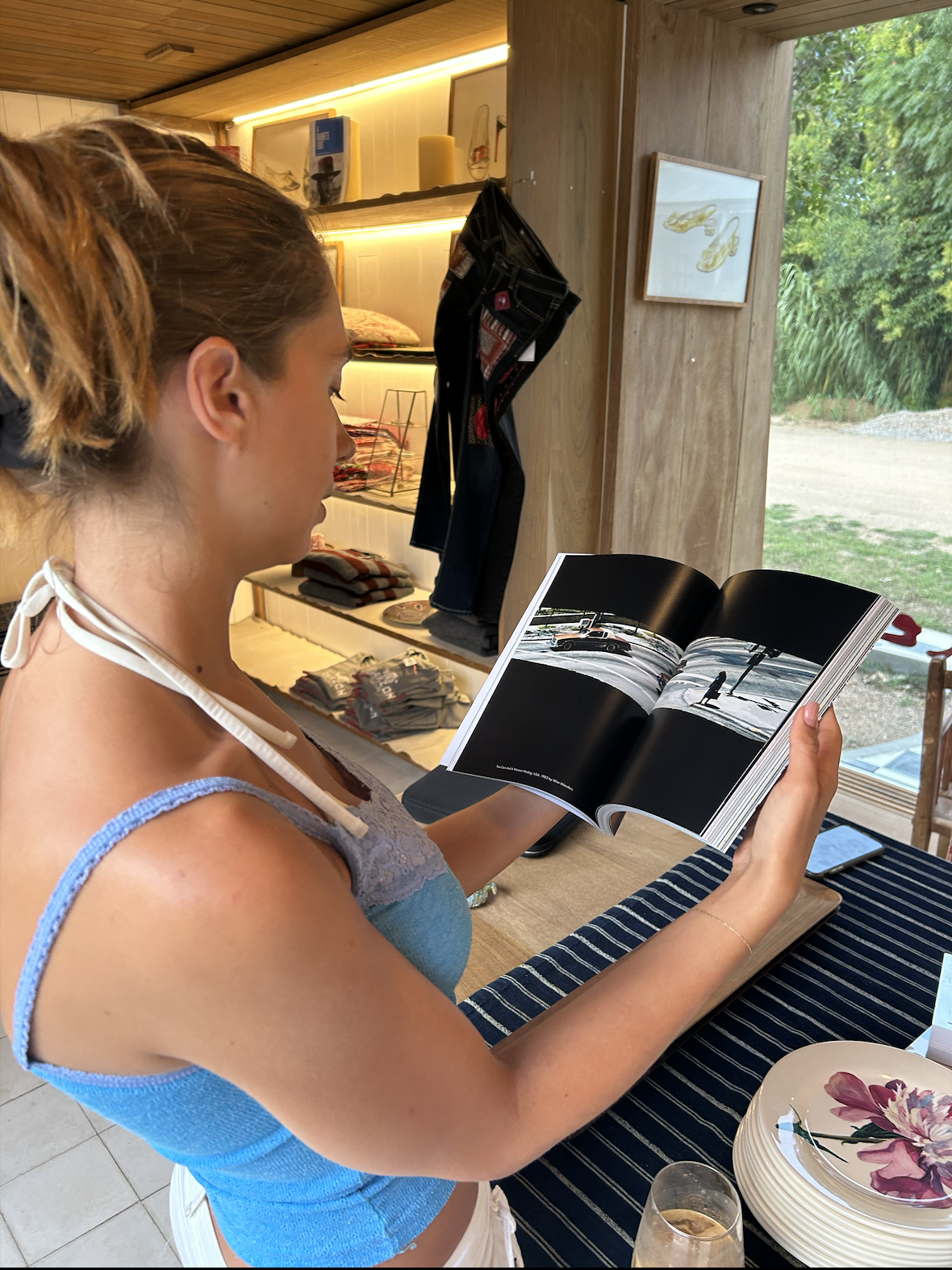
[Pueblo Garzon] is a magical small town with an eerie stillness that is only punctuated by the sound of birdsong and is the kind of place where after two days, you start to know everybody. It is a hotspot for artists and gallerists, as well as fine dining.”
“This has become my life,” says Moreira, who started working with the festival three years ago. “It matters what happens to the young people, especially.” Some of them know her from her film club in Montevideo, others through industry work. Moreira is my guide throughout the events, suggesting me addresses to eat, visit, whether in Jose Ignacio or Montevideo. Although I was supposed to only come to discover the festival, I discovered that Uruguay is one of the most film fanatic places I’ve been to. In the capital, I paid a visit to the incredible Cinemateca Uruguaya, by far one of the most stylish movie institutes, with a legendary archive that apparently features a 70mm on Abbas Kiarostami’s The Wind Will Carry Us. Joined by folks from Generation Jota, and some new pals from the local film industry, we also popped over the street to La Ronda, a bar known as a gathering spot for the country’s moviemakers, with posters of Whisky, or other great domestic movies all over their walls. It’s good to have friends abroad.
I also spent time with my friend Allegra Mallmann in Pueblo Garzon. This is a magical small town with an eerie stillness that is only punctuated by the sound of birdsong and is the kind of place where after two days, you start to know everybody. It is a hotspot for artists and gallerists, as well as fine dining (naturally, I had some incredible meals at Francis Mallmann’s restaurant). Garzon’s Black Gallery is certainly worth visiting.
Allegra not only stocks A Rabbit’s Foot at her incredibly chic and cool boutique Carmen—named after a beloved elderly resident, Doña Carmen—but they also sell some of the rarest movie books I have seen. There’s a Wim Wenders photography volume, and numerous biographies, in Japanese, plus an original edition of Pasolini’s A Violent Life. Our friends Posteritati are well represented too, with vintage cinema posters from one of Allegra’s previous trips to New York City. Definitely an essential hangout for the international film black book.
Back in Montevideo, I got to hang loose and rest before my flight home. But no sooner had I gone to an unassuming asado spot in Punta Carretas when I discovered that the man beside me was Diego “Parker” Fernandez Pujol—a legend of Uruguayan cinema. Lu Moreira was actually one of his students, he told me. “Uruguay is a small place,” Pujol smiled. “You’re bound to sit next to someone with mutual friends.” And there are few better places than at the asado.
We discussed cinema in Uruguay—the country’s potential with audiovisual and location services. “The market is small. Netflix is not going to come here to make movies,” Pujol, who has also lived in Spain, said to me. “But if they did, they would find plenty of incredible creative talent.”
It’s a sentiment I feel strongly. And a belief that the founders of JIIFF, Lu Moreira, the Pfeffers, Generation J, Uruguay XXI, Mallmann, and everyone else I spent time with here, are working to make a reality: “I believe we should all leave the world a little better off,” he smiles. “If I can improve the cinema here by 10%, I’ll be happy.”

